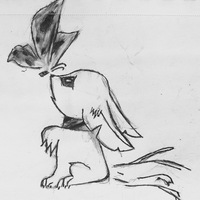
Куб с ребром 8 см покрасили, а потом распилили на кубики с ребром 1 см. Какую часть всех кубиков
составляют кубики: а) с тремя окрашенными гранями? б) с двумя окрашенными гранями? в) с одной окрашенной гранью? г) неокрашенные?Пожалуйста подробное решение. 0
0
 0
0
Ответы на вопрос
 Внимание! Ответы на вопросы дают живые люди. Они могут содержать ошибочную информацию, заблуждения, а также ответы могут быть сгенерированы нейросетями. Будьте внимательны. Если вы уверены, что ответ неверный, нажмите кнопку "Пожаловаться" под ответом.
Внимание! Ответы на вопросы дают живые люди. Они могут содержать ошибочную информацию, заблуждения, а также ответы могут быть сгенерированы нейросетями. Будьте внимательны. Если вы уверены, что ответ неверный, нажмите кнопку "Пожаловаться" под ответом.

Пошаговое объяснение:
Объем большого покрашенного куба:
V=8x8x8=512см³
Объем каждого кубика после распила:
V=1x1x1=1см³
Значит всего при распиле получилось 512 кубиков
Теперь находим остальное:
а. Три части могут быть окрашены только у углов изначального куба, таких кубиков получилось 8, по одному на каждый угол, 8/512 это 1/64 или 0.015625
б. Две части могут быть окрашены у тех частей, которые были ребрами изначального куба, не считая углы, у них три окрашенных части. У куба 12 ребер, каждое ребро содержит один ряд из 8 кубиков, но 2 (как угловые) мы исключаем, получается 6х12=72 кубика, 72/512 это 9/64 или 0.140625
в. Одна часть может быть окрашена у тех частей, которые были серединами сторон, находились между ребер куба, это сетка 6х6см, с каждой из 6 сторон куба, получается 6х6х6=216 кубиков, 216/512 это 27/64 или 0.421875
г. Неокрашенные части находились внутри, в теле куба, они составляют объем внутреннего куба со стороной 6х6см, т.к. весь внешний слой мы уже разобрали выше, получается 6х6х6=216 кубиков, 216/512 это 27/64 или 0.421875
Проверка: 8/512+72/512+216/512+216/512=512/512 - верно, все сходится
Для примера я нарисовал кубик 4х4см, на нем желтым выделены углы (случай А), синим ребра (случай Б) и красным серединки (случай В), остальное, то что не видно, это случай Г

 0
0
 0
0

Problem Analysis
We have a cube with an edge length of 8 cm. This cube is painted and then divided into smaller cubes with an edge length of 1 cm. We need to determine the fraction of all the cubes that have a certain number of painted faces.Solution
To solve this problem, we need to consider the number of painted faces on each smaller cube.Let's analyze the different cases:
a) Cubes with three painted faces: To have three painted faces, a smaller cube must be located on one of the corners of the original cube. There are 8 corners on a cube. Therefore, there are 8 smaller cubes with three painted faces.
b) Cubes with two painted faces: To have two painted faces, a smaller cube must be located on one of the edges of the original cube, but not on the corners. There are 12 edges on a cube. Therefore, there are 12 * 4 = 48 smaller cubes with two painted faces.
c) Cubes with one painted face: To have one painted face, a smaller cube must be located on one of the faces of the original cube, but not on the edges or corners. There are 6 faces on a cube. Therefore, there are 6 * (8 - 4) = 24 smaller cubes with one painted face.
d) Non-painted cubes: To have no painted faces, a smaller cube must be located inside the original cube, not on any of the faces, edges, or corners. The number of non-painted cubes can be calculated by subtracting the sum of the cubes with painted faces from the total number of smaller cubes.
Now, let's calculate the fraction of all the cubes for each case:
a) Cubes with three painted faces: The fraction of cubes with three painted faces is given by the formula: (number of cubes with three painted faces) / (total number of smaller cubes)
(number of cubes with three painted faces) = 8 (total number of smaller cubes) = (8/1)^3 = 512
Fraction of cubes with three painted faces = 8 / 512 = 1 / 64
b) Cubes with two painted faces: The fraction of cubes with two painted faces is given by the formula: (number of cubes with two painted faces) / (total number of smaller cubes)
(number of cubes with two painted faces) = 48 (total number of smaller cubes) = (8/1)^3 = 512
Fraction of cubes with two painted faces = 48 / 512 = 3 / 32
c) Cubes with one painted face: The fraction of cubes with one painted face is given by the formula: (number of cubes with one painted face) / (total number of smaller cubes)
(number of cubes with one painted face) = 24 (total number of smaller cubes) = (8/1)^3 = 512
Fraction of cubes with one painted face = 24 / 512 = 3 / 64
d) Non-painted cubes: The fraction of non-painted cubes is given by the formula: (number of non-painted cubes) / (total number of smaller cubes)
(number of non-painted cubes) = (total number of smaller cubes) - (number of cubes with three painted faces) - (number of cubes with two painted faces) - (number of cubes with one painted face) (number of non-painted cubes) = 512 - 8 - 48 - 24 = 432
(total number of smaller cubes) = (8/1)^3 = 512
Fraction of non-painted cubes = 432 / 512 = 27 / 32
Summary
The fractions of all the cubes with a certain number of painted faces are as follows: a) Cubes with three painted faces: 1/64 b) Cubes with two painted faces: 3/32 c) Cubes with one painted face: 3/64 d) Non-painted cubes: 27/32Please let me know if you need any further clarification.
 0
0
 0
0
Топ вопросов за вчера в категории Математика
Последние заданные вопросы в категории Математика
-
Математика
-
Литература
-
Алгебра
-
Русский язык
-
Геометрия
-
Английский язык
-
Химия
-
Физика
-
Биология
-
Другие предметы
-
История
-
Обществознание
-
Окружающий мир
-
География
-
Українська мова
-
Информатика
-
Українська література
-
Қазақ тiлi
-
Экономика
-
Музыка
-
Право
-
Беларуская мова
-
Французский язык
-
Немецкий язык
-
МХК
-
ОБЖ
-
Психология
-
Физкультура и спорт
-
Астрономия
-
Кыргыз тили
-
Оʻzbek tili





















